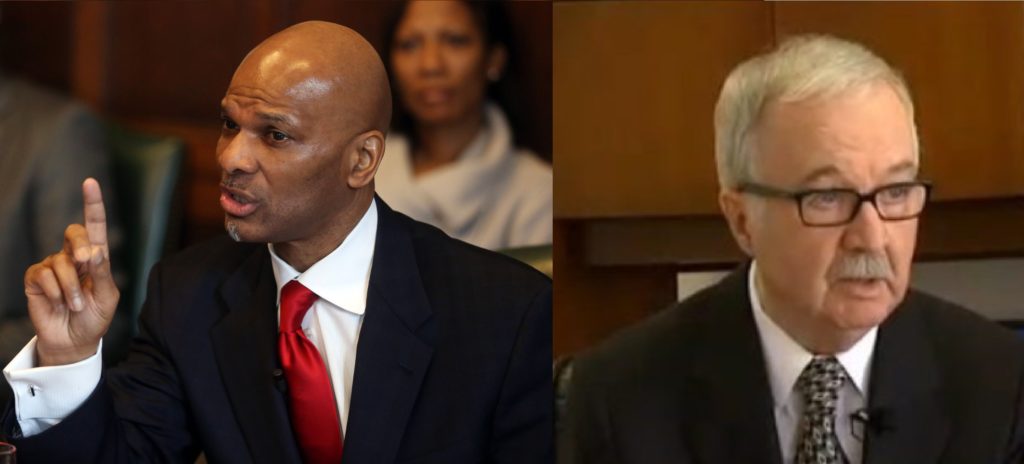
View as PDF
CHICAGO—The Democrat party establishment has challenged the petition signatures turned in by the independent ticket of entrepreneur William “Dock” Walls and economist and taxpayer advocate, James L. “Jim” Tobin.
“The left-wing, billionaire Democrat candidate, J.B. Pritzker, is behind the challenge,” said Jim Tobin, candidate for Lt. Governor, and president of Taxpayers United of America.
“Pritzker, a tool of Chicago machine boss and Ill. House Speaker, Michael J. Madigan, wants to raise state taxes again in order to pump more taxpayer dollars into the dying state pension funds for retired government employees. The dollars from the last, huge state income tax increase were pumped into the failing state pension funds. It barely moved the needle.”
“Based on 2018 pension data and the annual reports of the specific pension funds, at least 19,481 pensioners are receiving $100,000 or more in annual pension payments. No wonder the pension funds are foundering, and no wonder Springfield Democrats want to raise state taxes again.”
“Pritzker supports placing the Income Tax Increase Amendment on the statewide ballot, which current and retired state-government employees will vote for overwhelmingly. This would change the state income tax from a flat income tax to a graduated income tax.”
“If the amendment passes, House Bill 3522, filed by state Rep. Robert Martwick, D-Chicago, would tax incomes under $7,500 at 4 percent. For incomes between $7,500 and $15,000, the rate would be 5.84 percent. For incomes between $15,000 and $225,000, the rate would be 6.27 percent. And for incomes over $225,000, the rate would be 7.65 percent. In addition, the committee for budget and tax increases (Center for Tax and Budget Accountability) supports a maximum income tax rate of 9.85 percent.”
“Dock Walls and I will fight these challenges. This is not a game. It is a game-changer. We intend to appear on the statewide ballot in November. It’s no longer business-as-usual. It’s time Illinois taxpayers had candidates who look out for them, and who are not owned by government-employee unions.”






